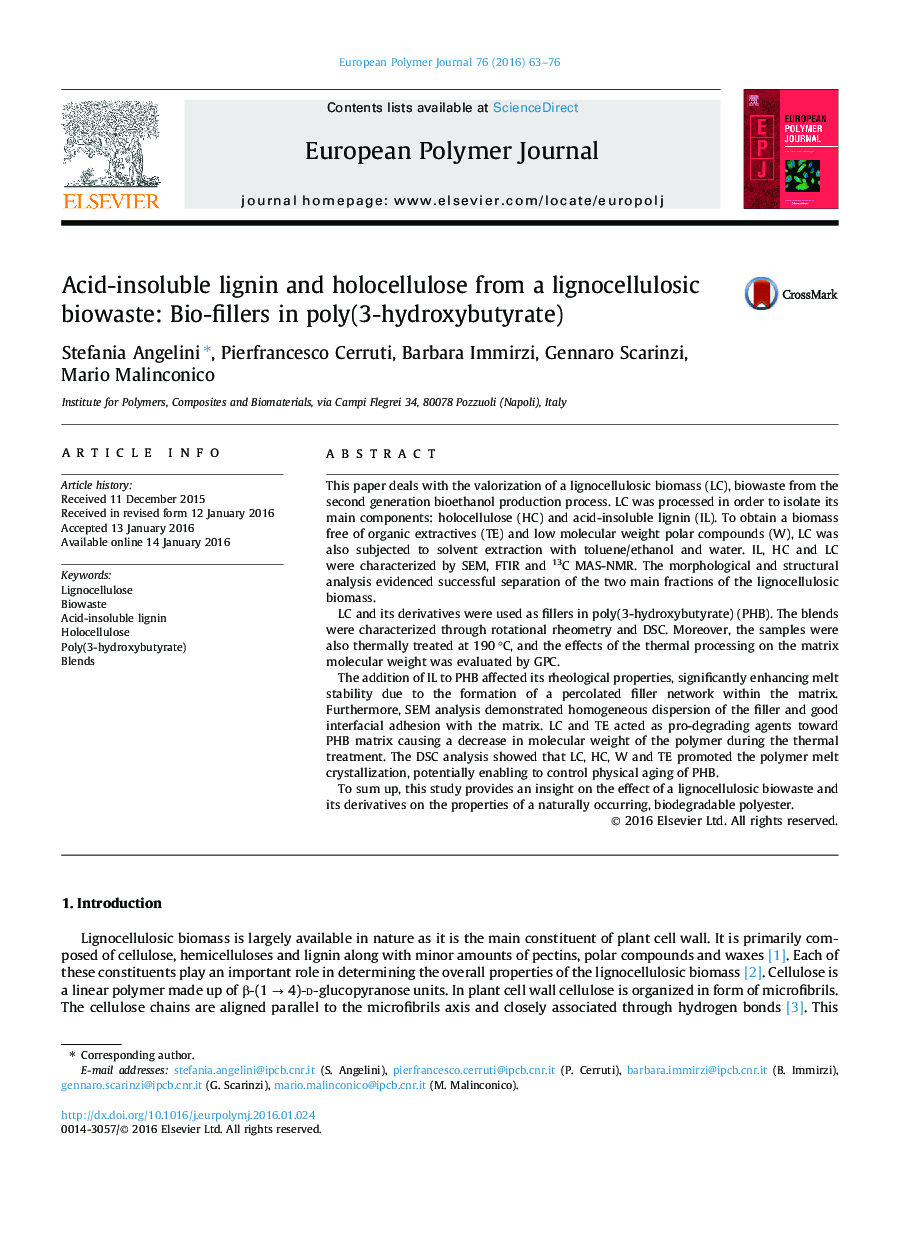| کد مقاله | کد نشریه | سال انتشار | مقاله انگلیسی | نسخه تمام متن |
|---|---|---|---|---|
| 1401510 | 1501359 | 2016 | 14 صفحه PDF | دانلود رایگان |
• Acid-insoluble lignin (IL) and holocellulose (HC) were isolated from lignocellulose (LC).
• IL, HC and LC were used as fillers in poly(3-hydroxybutyrate).
• IL improved poly(3-hydroxybutyrate) melt stability.
• IL formed a co-continuous percolated network within the polymer.
• HC and LC promoted polymer melt crystallization.
This paper deals with the valorization of a lignocellulosic biomass (LC), biowaste from the second generation bioethanol production process. LC was processed in order to isolate its main components: holocellulose (HC) and acid-insoluble lignin (IL). To obtain a biomass free of organic extractives (TE) and low molecular weight polar compounds (W), LC was also subjected to solvent extraction with toluene/ethanol and water. IL, HC and LC were characterized by SEM, FTIR and 13C MAS-NMR. The morphological and structural analysis evidenced successful separation of the two main fractions of the lignocellulosic biomass.LC and its derivatives were used as fillers in poly(3-hydroxybutyrate) (PHB). The blends were characterized through rotational rheometry and DSC. Moreover, the samples were also thermally treated at 190 °C, and the effects of the thermal processing on the matrix molecular weight was evaluated by GPC.The addition of IL to PHB affected its rheological properties, significantly enhancing melt stability due to the formation of a percolated filler network within the matrix. Furthermore, SEM analysis demonstrated homogeneous dispersion of the filler and good interfacial adhesion with the matrix. LC and TE acted as pro-degrading agents toward PHB matrix causing a decrease in molecular weight of the polymer during the thermal treatment. The DSC analysis showed that LC, HC, W and TE promoted the polymer melt crystallization, potentially enabling to control physical aging of PHB.To sum up, this study provides an insight on the effect of a lignocellulosic biowaste and its derivatives on the properties of a naturally occurring, biodegradable polyester.
Figure optionsDownload as PowerPoint slide
Journal: European Polymer Journal - Volume 76, March 2016, Pages 63–76
